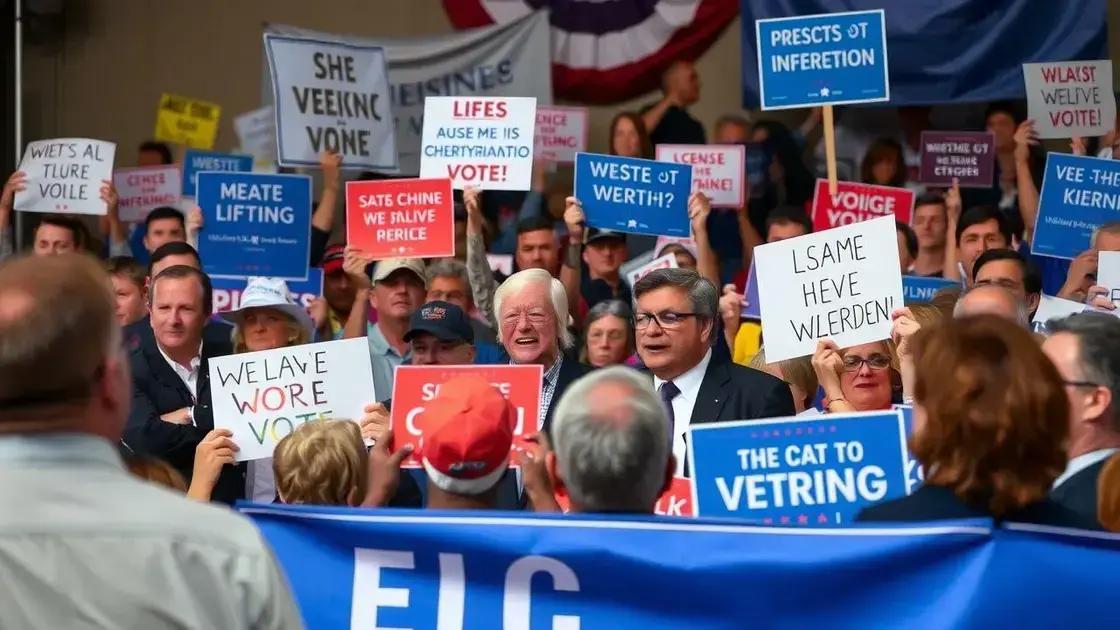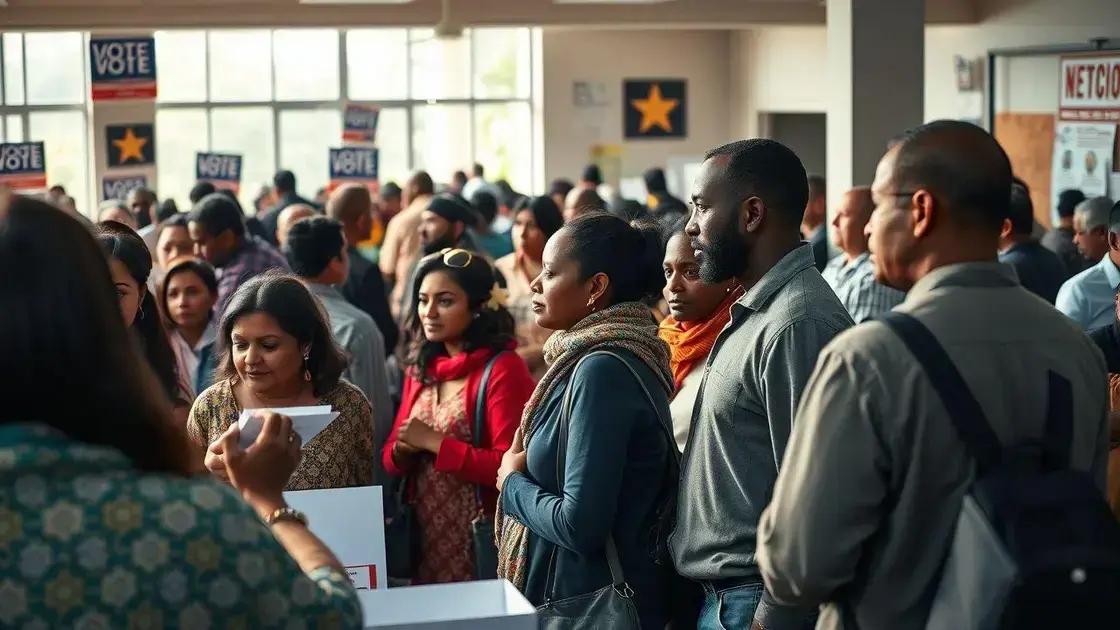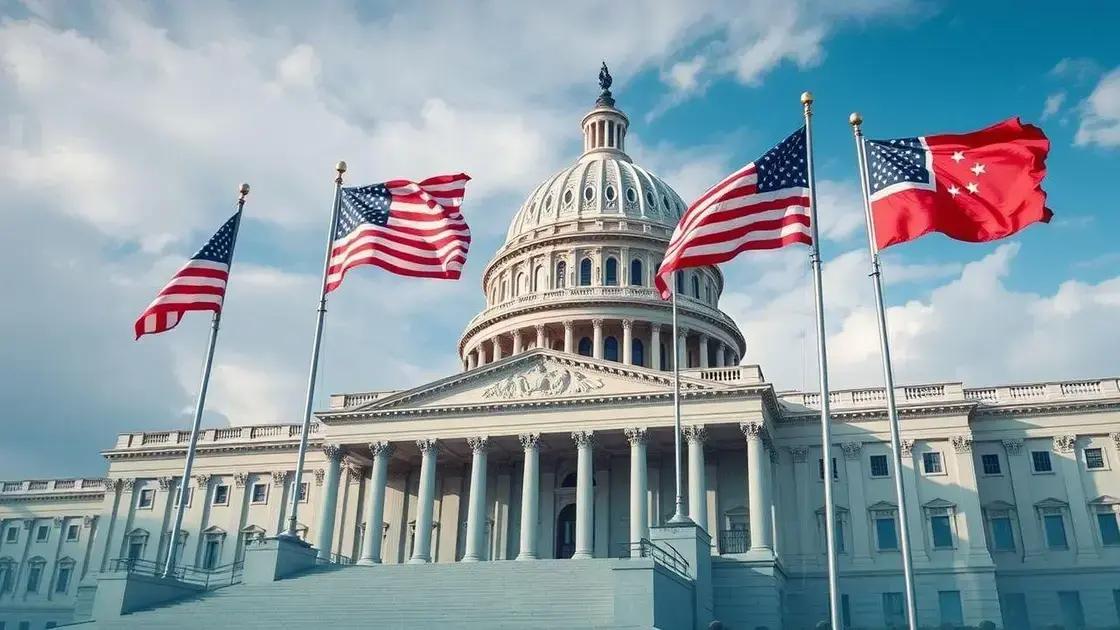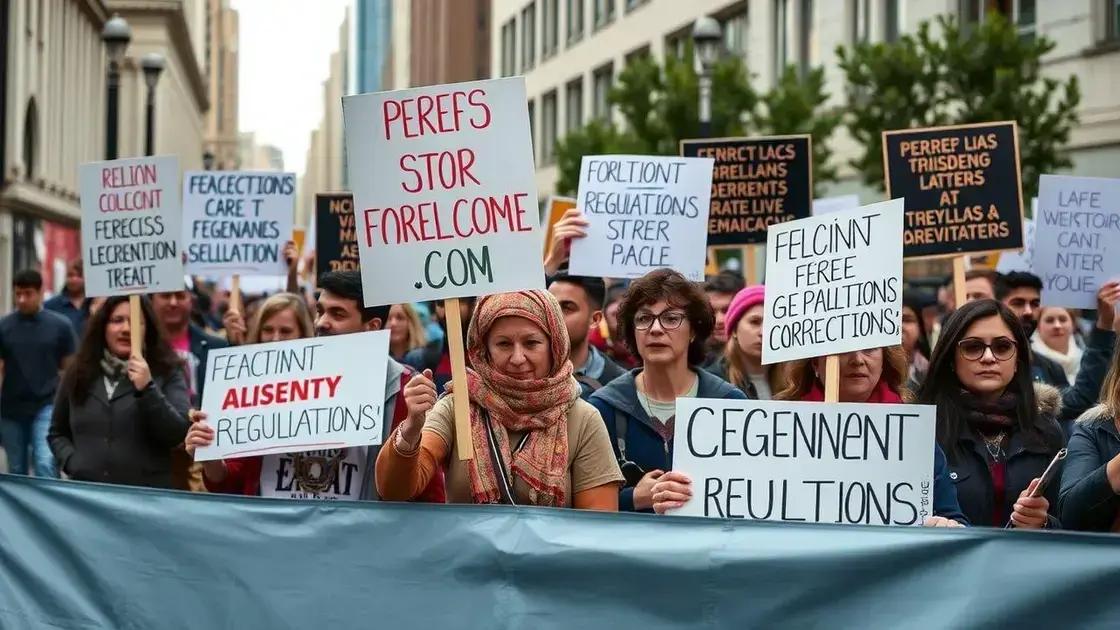Polls reveal shifting public opinion against Trump’s policy proposals

Polls reveal shifting public opinion against Trump’s policy proposals, highlighting increased disapproval rates and the growing influence of young voters and social movements on future elections.
Polls reveal shifting public opinion against Trump’s policy proposals, showcasing how voter sentiments are evolving. Have you noticed the changes in how people view these policies lately? Let’s dive into the latest findings and explore what this means for the political landscape.
Key findings from recent polls
Recent polls have uncovered some key findings regarding public opinion on Trump’s policy proposals. Understanding these shifts can provide insight into how voters are feeling as we approach upcoming elections.
Major Insights
One significant takeaway is the increase in disapproval ratings. Many are expressing concerns over specific policies such as immigration and healthcare. Let’s explore this in more detail.
- Disapproval of immigration policies has risen significantly.
- Healthcare proposals are viewed with skepticism by many voters.
- Younger voters show a stronger tendency to oppose existing policies.
- Overall, there is a growing demand for policy reform.
Additionally, demographic trends reveal varying opinions based on age and location. For instance, younger voters tend to favor more progressive policies, contrasting with older voters who may hold traditional views. This generational gap is critical in understanding voting patterns.
Impact on Voter Sentiment
The data also highlights how these shifts in public opinion can influence the political climate. Candidates and parties that fail to adapt to these changing views may struggle to connect with potential supporters.
This trend underscores the necessity for politicians to listen to the voices of the electorate. As polls indicate, public opinion is not static. It evolves with social changes and the political environment.
Being aware of these dynamics is crucial for stakeholders, as they navigate the complex landscape of American politics. The findings suggest that engaging with constituents can lead to more favorable reception of proposed policies.
Public reactions to specific policy proposals
Public reactions to specific policy proposals can shed light on the overall sentiment towards the administration. When it comes to Trump’s policies, reactions vary widely based on demographics and personal beliefs. It’s essential to grasp how these responses impact the political landscape.
Immigration Policy
One area of significant public interest is immigration policy. Many people express strong opinions on this topic, particularly regarding border security and pathways to citizenship.
- A large percentage of voters support comprehensive immigration reform.
- Concerns about border security often dominate discussions.
- Community impacts are a priority for many households.
As these issues are debated, it’s clear that public opinion is deeply divided. Some support strict measures, while others argue for compassionate approaches.
Healthcare Proposals
The stance on healthcare proposals has also elicited varied responses. Many people are worried about access and affordability, which leads to heightened discussions within communities.
- People are looking for solutions to rising healthcare costs.
- Coverage for pre-existing conditions remains a key concern.
- Public sentiment shows increasing demand for universal healthcare options.
Understanding these reactions is crucial for policymakers. By paying attention to public feedback, they can adjust their proposals to better align with voter expectations. As opinions shift, the need for dialogue around these policies grows.
These discussions highlight not just dissatisfaction with certain proposals, but also a yearning for solutions that resonate with the public’s needs.
Impact of shifting opinions on upcoming elections

The impact of shifting opinions on upcoming elections is significant. As voters express their changing views, candidates must adapt their strategies to connect with the electorate. Understanding these shifts can prove crucial for electoral success.
Voter Turnout
Shifts in public opinion can lead to varying levels of voter turnout. When people feel strongly about particular issues, they are more likely to head to the polls. Recent data shows that:
- Increased engagement among younger voters.
- Heightened interest in key issues like climate change and healthcare.
- A potential rise in turnout for progressive candidates.
This change indicates that traditional voting patterns may no longer hold firm. Candidates must resonate with these evolving sentiments to motivate voters.
Strategy Revisions
Political candidates are revising their campaign strategies in response to these shifting opinions. As communities voice their needs, politicians are finding it essential to stay relevant. We see that:
- Candidates are focusing more on grassroots movements.
- The use of social media is becoming more prominent.
- Listening to constituents is prioritized over party lines.
In doing so, they can build stronger relationships with voters. Responding quickly to public feedback can create a sense of connection and trust.
The evolving political landscape reflects a more dynamic relationship between candidates and voters. As public opinions shift, the pressure is on candidates to adapt and understand these movements to secure their position.
Comparative analysis with past public sentiments
Understanding the comparative analysis with past public sentiments provides key insights into how opinions have evolved over time. By reviewing historical data, we can see the trajectory of public feelings towards Trump’s policies and how they reflect broader social changes.
Historical Context
In previous elections, public sentiment was often shaped by different pressing issues. For example, economic conditions and foreign policy decisions had a huge impact on how voters aligned. Analysts observe that:
- Concerns about the economy dominated public opinion in earlier electoral cycles.
- Foreign policy often swayed voters’ decisions in critical moments.
- Social movements have increasingly shaped opinions in recent years.
This shift suggests that as society changes, so do voter priorities. Recognizing these patterns can inform understanding of current trends.
Shifts in Key Issues
The issues that once took precedence have changed significantly. Today, topics like climate change and social justice resonate more with the electorate. Observing the changes in public priorities reveals much:
- There is a noticeable increase in the focus on climate action.
- Social justice movements have become more influential.
- Healthcare reform is a top priority in public discussions.
These evolving issues indicate a shift from traditional party lines to more diverse concerns that impact people’s daily lives.
Comparing these past sentiments helps frame the current political landscape. It highlights how candidates should adapt to remain relevant and responsive. As public attitudes change, so too must political strategies to connect with an increasingly diverse voter base.
Expert opinions on future politics
Expert opinions on future politics can provide valuable insights into how the landscape may evolve. Analysts, political scientists, and strategists share their thoughts on what to expect in the coming years.
Trends Shaping Politics
Many experts agree that several key trends will significantly influence the future political environment. This includes the impact of technology and social movements. Notable trends include:
- Increased reliance on digital platforms for campaigning and communication.
- Social movements raising awareness and driving change on various issues.
- Shifts in public policy addressing climate change and economic inequality.
As these trends continue to unfold, they will likely redefine political engagement and voter expectations.
The Role of Young Voters
Another aspect being closely observed is the role of young voters. Analysts note that younger demographics are increasingly involved in politics, and their preferences may sway future elections. Key points include:
- Young voters prioritize issues like education, climate change, and social justice.
- Their engagement has shown significant growth in recent elections.
- They tend to favor candidates who resonate with progressive values.
This growing influence of younger voters is reshaping how candidates approach their platforms and outreach efforts. It signals a shift towards more inclusive policies that address the priorities of this demographic.
As experts analyze these factors, they emphasize the importance of adaptability among politicians. To succeed, they need to connect with diverse voters and respond to their evolving needs. By staying in tune with public sentiment, candidates can navigate the complexities of future politics more effectively.
FAQ – Frequently Asked Questions about Public Opinion and Politics
How do shifting public opinions affect elections?
Shifting public opinions can significantly influence voter turnout and candidate strategies, ultimately determining election outcomes.
What role do young voters play in the current political landscape?
Young voters are increasingly engaged in politics, prioritizing issues like climate change and social justice, which can sway elections.
Why are social movements important in shaping public opinion?
Social movements raise awareness and motivate voters, pushing political agendas that reflect the concerns of the public.
How can politicians adapt to changing public sentiment?
Politicians can adapt by actively engaging with constituents, addressing their concerns, and modifying their policies to align with evolving voter priorities.






